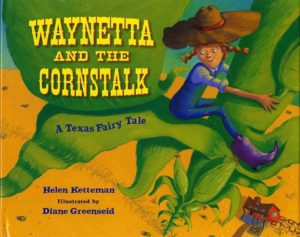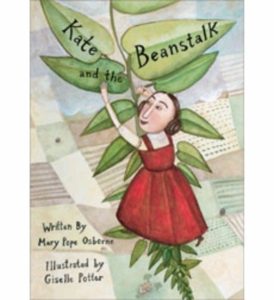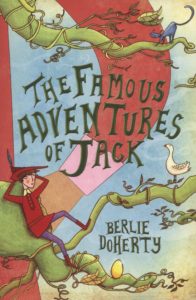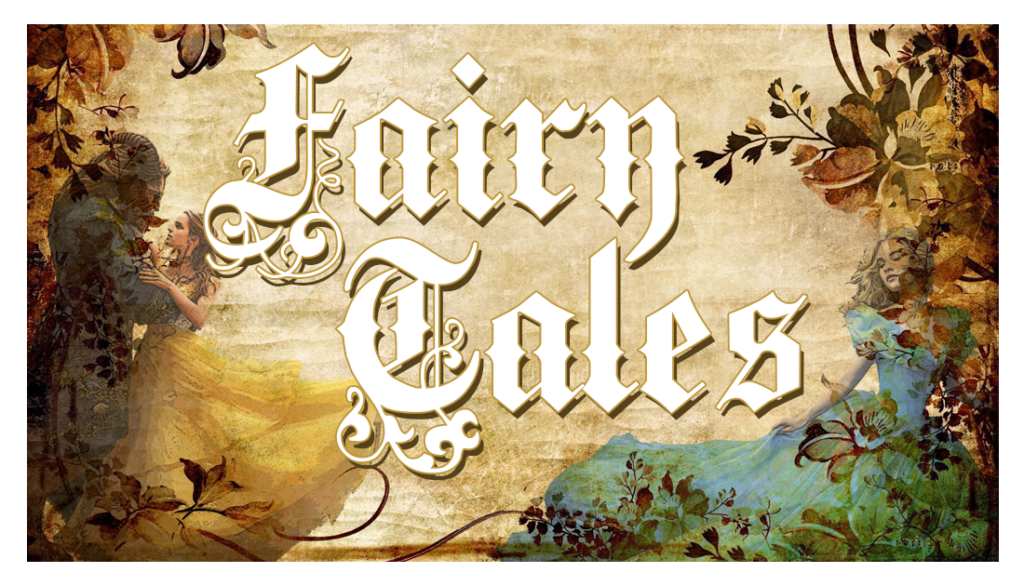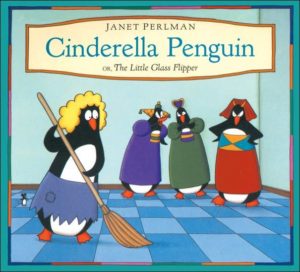
|
Janet Perlman’s Cinderella Penguin, or The Little Glass Flipper (Puffin, 1995) sticks quite closely to the traditional plot, except that all the characters – including the put-upon Cinderella, the evil stepsisters, the charming prince, and the fairy godmother – are penguins. For ages 4-8. |
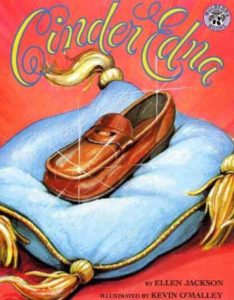
|
In Ellen Jackson’s Cinder Edna (HarperCollins, 1998), Edna, Cinderella’s self-sufficient neighbor – who can play the accordion and knows 16 different ways to make tuna casserole – goes to the ball in penny loafers and ends up marrying the prince’s kind-hearted younger brother, Rupert. For ages 4 and up. |
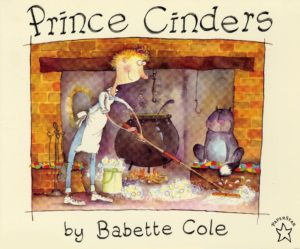
|
In Babette Cole’s Prince Cinders (Puffin, 1997), Cinders is a scrawny underdog who spends his life cleaning up after his three beefy older brothers. Left at home when his brothers roar off to the Palace Disco, Cinders encounters a well-meaning but inept fairy (she falls down the chimney), who does her best to make his wishes come true, but only succeeds in turning him into a large hairy ape. Still, after a couple of twists and turns and a pair of lost trousers, he manages to capture the heart of Princess LovelyPenny. For ages 4-8. |
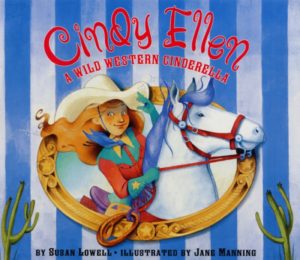
|
In Susan Lowell’s Wild-West-style Cindy Ellen (HarperCollins, 2001), Cindy – who underneath her ragged clothes is pretty as a peach – is forced to do all the dirty work on the ranch by her meaner-than-rattlesnakes stepmother and stepsisters. When she’s forbidden by the nasty trio to attend the big rodeo and square dance, a snarky fairy godmother shows up, tells her to get a little gumption, and sends her off to the dance decked out in diamond spurs to win the love of Joe Prince. For ages 4-8. |
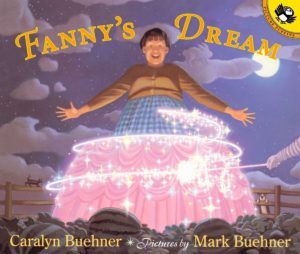
|
In Caralyn Buehner’s Fanny’s Dream (Puffin, 2003), Fanny, a Wyoming farm girl with romantic dreams of marrying a prince, is thrilled when she hears that the mayor is throwing a ball. She dresses in her best, hurries out to the garden, and waits for the arrival of her fairy godmother – who fails to appear. Instead the cheerful (and very short) Heber Jensen shows up, and proposes. Heber and Fanny marry, tend their farm, and have three children – at which point, belatedly, Fanny’s fairy godmother finally arrives. Fanny, however, no longer needs her: she realizes that she’s found her prince and is living happily ever after. For ages 5-8. |

|
In Helen Ketteman’s Cinderella parody, Bubba, the Cowboy Prince (Scholastic, 1997), Bubba is an overworked cowhand, bossed around on the family ranch by his mean stepdaddy and stepbrothers Milton and Dwayne. Luckily, with some magical help from his fairy godcow, he goes to the ball at Miz Lurleen’s ranch. Miz Lurleen, the richest, prettiest girl around, just happens to be looking for a cowhand who is “cute as a cow’s ear.” For ages 6-8. |
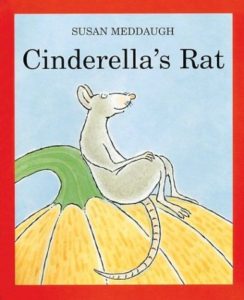
|
Susan Meddaugh’s Cinderella’s Rat (Sandpiper, 2002) is narrated by the rat who was caught in a trap by Cinderella’s fairy godmother and transformed into a coachboy. (“I was born a rat. I expected to be a rat all my days. But life is full of surprises.”) At the ball, the coachboy and his sister Ruth – still a rat – are caught in the palace larder, where a fellow servant insists that they visit a wizard so that the presumably-enchanted Ruth can be turned back into a girl. This isn’t as simple as the wizard expected, since Ruth really is a rat. A great collection of unexpected twists for ages 5-9. |
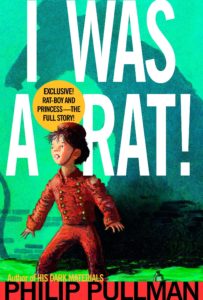
|
In Philip Pullman’s 176-page I Was a Rat! (Yearling, 2002), Old Bob and his wife Joan open their door one night to find a little boy in a ragged page’s uniform who can only say “I was a rat.” He is, in fact, one of the enchanted rats who accompanied Cinderella (a.k.a. Lady Aurelia Ashington, but known to the rat as Mary Jane) to the ball. Bob and Joan name the rat-boy Roger and do their best to care for him, but his rat nature makes it difficult: at home, he shreds his bedding; sent to school, he eats pencils and bites the teacher. Soon the story of the rat-boy is all over town – popularized by tabloid stories in The Daily Scourge – and Roger, after a series of misadventures, ends up condemned to death as the so-called “Monster of the Sewers.” He’s saved by the devoted Bob and Joan, with help from the newly-married Princess Aurelia. A great read and a good discussion book for ages 8-12. |
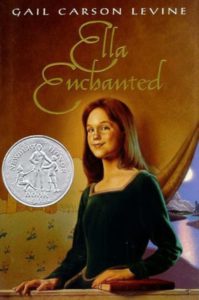
|
In Gail Carson Levine’s Newbery Honor-winning Cinderella tale, Ella Enchanted (HarperCollins, 1998), Ella has been cursed at birth by the idiotic fairy Lucinda, who saddled her with the “gift” of obedience – such that Ella, willy-nilly, has to do whatever anyone tells her to do. When her mother dies, Ella is left to cope with her selfish father, a miserable finishing school, and eventually a stepmother and a pair of wretched stepsisters as she struggles to rid herself of Lucinda’s curse. There’s also an unexpected fairy godmother, a handsome prince, a pair of glass slippers, and a happy-ever-after ending. For ages 9 and up. |
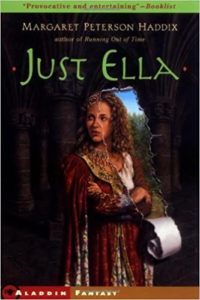
|
In Margaret Peterson Haddix’s Just Ella (Simon Pulse, 2007), life after the ball isn’t all it’s cracked up to be. Ella, now the Prince Charming’s fiancée, is bored with embroidery and court etiquette, disenchanted with the prince, and attracted to her much nicer tutor, Jed. When she tries to break the engagement, however, the not-so-charming Charming locks her in the dungeon. For ages 10-14. |
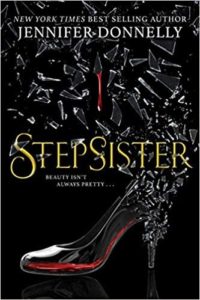 |
Jennifer Donnelley’s Stepsister (Scholastic, 2019), set in eighteenth-century France, is told from the point of view of Isabella, one of the stepsisters, and her quest to change her destiny which – unbeknownst to her – is a part of a wager between the rascally Marquis de Chance and the Fates. Isabella’s bravery and her sister Octavia’s brilliance eventually go to show that there’s more to life than simply being pretty – especially with a warlord ravaging the countryside. A great read for ages 12 and up. |
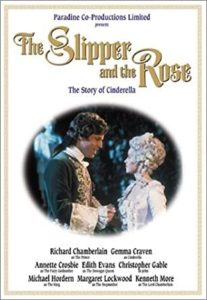 |
There are many Cinderella movies – among them Disney’s animated classic Cinderella (1950), Ever After (1998), which purports to tell the true story of Cinderella – and involves Leonardo da Vinci (PG-13), and Kenneth Branagh’s 2015 Cinderella (PG), in which Cate Blanchett plays the wicked stepmother – but don’t miss the beautiful 1976 The Slipper and the Rose (G), starring Gemma Craven and Richard Chamberlain. |
|
From the University of Southern Mississippi, The Cinderella Project has texts and images from many historical versions of Cinderella. |











